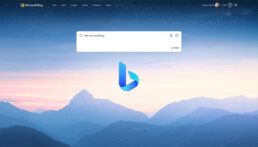Why Microsoft Ads, formerly Bing Ads Excel for Targeting Specific Demographics
Why Are Microsoft Ads (formerly Bing Ads) More Effective for Certain Demographics?
Microsoft Ads are particularly effective with older, educated, and higher-income groups. Its detailed ad targeting allows you to reach echoes of demographic specificity not as available on other platforms. Bing’s users are less likely to use ad-blockers and are known for brand loyalty. Plus, it’s generally more cost-effective with cheaper cost-per-click rates. Additionally, Bing is especially beneficial if you’re in the healthcare, travel, or retirement sectors. So, if you’re looking to target mature, financially steady markets, Bing may just be your go-to resource. Keep exploring this topic for more insight into how you can boost your return on advertising investment.
Understanding Bing and Google Ads
To fully grasp the effectiveness of Bing Ads for certain demographics, you must first get your head around the fundamental differences and similarities between Bing and Google Ads. Both platforms utilize pay-per-click advertising models, but their ad targeting strategies and platform usability vary.
Bing’s ad targeting strategies are known for being particularly detailed. You can customize by location, time of day, day of the week, device, and more. This allows for a high degree of specificity in reaching your desired demographic. Google Ads, on the other hand, also offers extensive targeting options, but with broader categories, making it a bit less precise.
When comparing platform usability, Bing’s interface is often considered more user-friendly. It’s intuitive, easy to navigate, and offers straightforward reporting features. Google’s platform, while powerful, can seem complex and intimidating to beginners. That’s not to say it’s difficult, but there’s a steeper learning curve involved.
Understanding these differences and similarities is key to determining which platform is best suited for your target demographic. By analyzing the ad targeting strategies and platform usability, you can make an informed decision about where to invest your advertising dollars.

Demographic Reach: Microsoft Ads (Microsoft Ads) Vs Google
When reaching specific demographics, Microsoft Ads’s audience differs considerably from Google’s, offering unique opportunities to fine-tune your advertising strategy. You might wonder why this is important. Knowing the demographic reach of both search engines allows you to understand where your ads may be most effective.
Search engine variations play a significant role in this. Google, with its vast user base, might seem like the obvious choice for advertisers. However, don’t overlook Microsoft Ads’s potential. Microsoft Ads’s users are typically older, more educated, and have a higher income than Google’s, making them a prime audience for certain products or services.
Advertiser preferences also come into play here. With Microsoft Ads, you can target ads more precisely by age and gender. This can be a game-changer if your product or service targets a specific demographic.
Microsoft Ads, formerly Bing Ads, Is A Unique Audience Profile
Diving deeper into Microsoft Ads’s unique audience profile, you’ll find that it’s often overlooked yet presents a valuable opportunity for advertisers targeting a more affluent and mature demographic. Microsoft Ads’s user engagement is typically higher among those aged 45-54, and it is known for its substantial purchasing power. This demographic is more likely to have an established career, a stable income, and, consequently, more disposable income to spend.
Microsoft Ads’s ad placement strategy also plays an essential role in its success among these demographics. Microsoft Ads places ads strategically where this demographic is most likely to see and interact with them. The platform’s intuitive, user-oriented design ensures that ads aren’t intrusive but rather seamlessly integrated into the user’s search experience.
Moreover, Microsoft Ads’s demographic-focused ad targeting allows advertisers to tailor their messages specifically to this audience, increasing the likelihood of engagement and conversion. Microsoft Ads shouldn’t be dismissed as a viable advertising platform. Its unique audience profile and effective ad placement strategy can indeed offer substantial returns for advertisers targeting the right demographic, making it a potent tool in any marketer’s arsenal.
Google Ads Popular Demographics
Shifting gears to Google Ads, you’ll find it appeals to a different, yet equally valuable demographic, particularly the tech-savvy, younger audience. This demographic is typically more comfortable with digital platforms and has grown up with Google as a household name.
The demographic analysis of Google Ads users reveals a higher concentration of millennials and Generation Z. These users are more likely to engage with ads, especially those tailored to their interests and browsing habits. Google Ads’ ad targeting strategies are advanced, allowing for a highly specific and personalized approach. This results in a more effective engagement with these younger demographics, who appreciate relevance and personalization.
Furthermore, Google’s reach is vast, and the platform’s advanced algorithms allow for a granular approach to ad targeting. This means you can precisely target your audience based on interests, behaviors, and even specific keyword searches. It’s no wonder Google Ads has a strong hold on the younger demographic.
Microsoft Ads Ads’ Advantage: Older Demographics
In contrast to Google Ads, Microsoft Ads Ads have a significant advantage for older demographics. Microsoft Ads’s user behavior data shows a higher percentage of users aged 55 and above. This key demographic often has more disposable income and, as a result, more potential for advertisers.
Your ad targeting strategies can be more effective with Microsoft Ads Ads if your product or service aligns with the interests of this older demographic. For instance, if you’re in the healthcare, travel, or retirement planning sectors, leveraging Microsoft Ads Ads could lead to higher returns on your ad spend.
Moreover, Microsoft Ads users in this age group tend to be less tech-savvy and more brand-loyal. They’re less likely to use ad-blockers, and once they find a brand they trust, they stick with it. This presents a golden opportunity for advertisers to captivate and convert this audience.
Geographic Differences Between Microsoft Ads and Google
When planning your ad strategy, have you considered the geographic differences between Microsoft Ads and Google? If not, you’re missing out on an important factor that could greatly enhance your campaign’s success.
Firstly, you should understand that regional preferences greatly influence search engine popularity. For instance, Microsoft Ads is more popular in the U.S., Canada, and the UK, while Google dominates most of the world. This means that if your target demographic is located in North America or the UK, Microsoft Ads could be a more effective platform for your ads.
Moreover, Microsoft Ads powers Yahoo’s search engine, which is highly popular in Japan. So, if you’re targeting Japanese customers, don’t overlook Microsoft Ads’s potential reach. Microsoft Ads’s integrated services, like Microsoft Ads Maps and Microsoft Ads Local, give it a distinct advantage in certain locales. For example, Microsoft Ads Maps is often more accurate in remote or rural U.S. areas than Google Maps, making Microsoft Ads ads more effective for businesses targeting these regions. When crafting your ad strategy, keep these geographic differences in mind. By doing so, you can ensure you’re using the right platform to reach your target audience.
Microsoft Ads’s Superior Purchasing Power Demographics
You might be surprised to learn that Microsoft Ads users typically have a higher purchasing power than those using other search engines. This fact is important when contemplating Microsoft Ads’s affordability. It’s not only about saving money on the cost per click but about reaching a demographic that can spend more on your products or services.
Regarding demographic targeting, Microsoft Ads gives you a significant advantage. The platform’s users are generally older, with about 40% being 35 or older, and they’re more likely to have a household income of over $100,000. This demographic isn’t just browsing; they’re looking to purchase.
Microsoft Ads’s affordability and superior purchasing power demographics offer a compelling reason for your business to consider Microsoft Ads Ads. You’re reaching a wide audience, but an audience with the means and the intent to buy. This can result in a higher return on your advertising investment.
Google Vs Microsoft Ads: Advertising Cost
When comparing advertising costs between Google and Microsoft Ads, it’s important to understand that while Google may boast a larger user base, Microsoft Ads often offers a more cost-effective approach. This affordability can be a game-changer, especially for small businesses or those with a tight budget allocation.
To fully comprehend this, let’s consider the following points:
• Microsoft Ads typically has lower cost-per-click (CPC) rates than Google. This means you can stretch your budget further and potentially reach more users with the same amount of money.
• The competition for ad space on Microsoft Ads is often less intense. Less competition means you have a greater chance of your ad being seen.
• Microsoft Ads’s ad targeting strategies can be more precise due to its demographic and location targeting options. This means you’re more likely to reach your intended audience.
• Microsoft Ads also allows for more granular control over when and where your ads are displayed, providing greater flexibility.
• Lastly, Microsoft Ads’s customer service is often praised for being more responsive and helpful than Google’s, which can make a significant difference if you encounter any issues.
Effectiveness Metrics: Conversion Rates Comparison
Digging further into the comparison, it’s imperative to assess the effectiveness of Microsoft Ads Ads regarding conversion rates. The conversion rate is an important metric that shows the percentage of visitors who complete desired actions, such as buying a product. It’s a direct measure of an ad’s effectiveness.
One factor that can influence conversion rates is ‘Ad Copy Influence.’ A well-crafted ad copy can grab attention, spark interest, and trigger action. Microsoft Ads Ads allows more flexibility and creativity in ad copy, potentially boosting conversion rates. You can craft compelling headlines and descriptions that resonate with your target audience.
Let’s not forget about ‘Platform Usability’. Microsoft Ads Ads’ user-friendly interface makes monitoring, analyzing, and optimizing your ads for better conversion rates easy. The platform provides detailed analytics and insights to help you make data-driven decisions. By understanding what works and what doesn’t, you can tailor your ads to meet your audience’s needs and preferences.
Microsoft Ads and Google Ads: Who Wins?
When evaluating the heated competition between Microsoft Ads and Google Ads, it’s crucial to assess their effectiveness in reaching your business’s target demographic and achieving your marketing goals. Both platforms have unique ad targeting strategies and platform user behaviors that can impact the success of your campaign.
Here are some key aspects to assess:
• Google Ads typically has a broader user base, potentially exposing your ad to a wider audience.
• Microsoft Ads Ads, however, often boast higher engagement rates, possibly due to less competition and more targeted audiences.
• Ad targeting strategies differ between the two platforms. Google Ads focuses more on demographics and interests, while Microsoft Ads Ads leans towards location and device targeting.
• Platform user behaviors also vary. Google users tend to be younger and more tech-savvy, while Microsoft Ads’s audience comprises more mature, higher-income individuals.
• Microsoft Ads Ads might be more cost-effective, often offering cheaper Cost Per Click (CPC) than Google Ads.
So, you’ve seen how Microsoft Ads Ads can target a unique, older demographic with superior purchasing power. This, coupled with lower advertising costs and impressive conversion rates, makes it a powerful tool in reaching specific audiences.
While Google Ads is still popular, don’t overlook the potential impact Microsoft Ads Ads can have on your marketing strategy. Ultimately, it’s about finding the right balance and platform that best suits your business needs.
